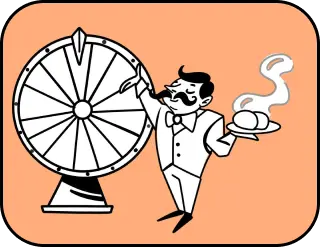Category: Cognitive technologies
Happiness in bubbles
Nature loves all things round. For example, a sphere is not just a shape—it’s a symbol of perfection, balance, and joy. From bubbles in soda to planets and stars—nature seems to savor the pleasure of geometric simplicity. A sphere is the shape nature chooses when it wants to rest. It’s perfect when something needs to be contained within the smallest possible shell. Almost everything that grows, drips, bursts, or flies tends toward roundness. Why?
Because a circle is the shape with the least surface tension. Because a sphere has the smallest surface area for a given volume. Because nature is economical: it doesn’t like to waste energy. And also—it’s fun. Very fun.
A soap bubble strives to become a sphere not because it wants to be beautiful (though it already is), but because that’s simply easier. A bubble in soda isn’t just a droplet of gas; it’s a physical protest against pressure. A chewing gum bubble is a tiny laboratory testing strength and elasticity.
It turns out that the world of bubbles holds answers to many questions—from the strength of materials to the structure of the universe. A soap bubble can tell us about surface tension; a droplet about gravity; and bubbles in champagne about gases, pressures, and even volcanoes.
Spherical shapes surround us everywhere, but we’ve become so accustomed to them that we hardly notice it. It’s time to change that. Welcome to the world of bubbles, where physics and poetry are not enemies but allies.
Air Balloon: Freedom in Latex

In childhood, balloons were more than just rubber and air—they were portals into carefree days, comforters, symbols of flight. Let the string go off—and along with it, worries fly away. Today, a balloon can still surprise you—if you give it a chance.
Static Charge—or How to Become Attractive
The first step: rub the balloon against your sweater. You get an effect familiar to everyone: hair standing on end, the balloon sticking to the ceiling, water from the tap bending toward the electrified sphere—as if enchanted.
The principle is simple: remove electrons and create a charge. Suddenly, invisible energy works in your favor. The balloon becomes like a charismatic conversationalist at a party—it draws everything around it.

Water Armor: The Effect of Cold-Bloodedness
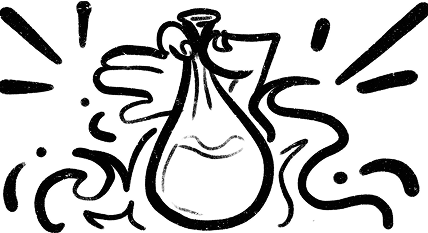
Replace air with water and bring the balloon close to a flame. Paradoxically, the fire licks but doesn’t defeat it. Inside works a quiet hero—the water—that absorbs heat and prevents the balloon from bursting.
This experiment embodies self-control: the fire is outside; calmness is inside. But beware—you might burst from curiosity.
A Rocket on a Budget
Inflate a balloon without tying it off and let go—it flies away. No GPS, no plan, no control in sight. Its power source? Air itself. As it escapes outward, it pushes the balloon forward like a jet engine—based on the principle: you push air out, and air pushes back on you—a kind of reactive chaos.
A balloon is like an idea during brainstorming: impossible to hold or predict, but it keeps flying—until it hits a cactus.
Sometimes you just need to let the air out.

A Quiet Pop—or Almost Nothing
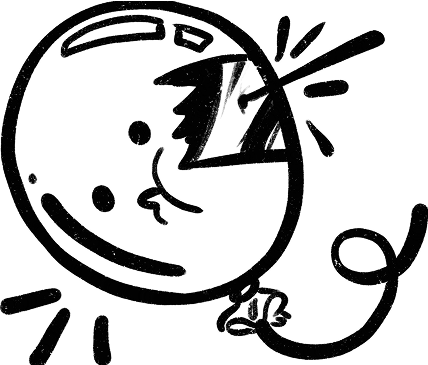
Take some tape, wrap it around—the balloon is ready for testing. Poke holes—and instead of that familiar “pop,” you get almost nothing. It holds together because it’s prepared.
It all comes down to pressure—and vulnerability points. Sounds familiar?
Without armor, internal air pressure instantly tears the rubber apart—that’s when you hear that loud “pop,” and the colorful rubber falls to the floor. Armor isn’t forever—but at just the right moment, it works.
Soap Bubbles
How much we wanted to catch a bubble on our palm as children. Almost never succeeded. That’s because our hands are not perfectly smooth; they have dust, grease, tiny fibers that damage the delicate soap film, causing the bubble to pop. But if you lightly moisten your hand with a soap solution, the bubble will land successfully. You can even try blowing a bubble directly onto your palm using a straw.
Water molecules love to stick together, but soap breaks this bond, turning water into a thin film. Air pushes inside, stretching the water and gently inflating it—thus, a soap bubble is born. When light hits its surface, it refracts, reflects, and splits into rainbow spectra. These colors collide, mix, disappear, and reappear again. Each soap bubble exists only as a unique specimen—no two are alike.
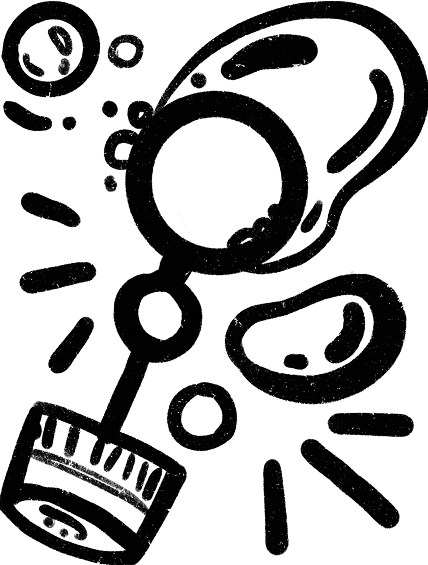
The Bubble Project: From Idea to the Entrance Inside

To blow a bubble that lasts forever—or almost—an additional ingredient is needed: glycerin. It acts like glue, making the film strong and elastic. For giant bubbles, you need plenty of glycerin; then they can last an eternity—or at least a few minutes.
For truly large bubbles, a different approach is required. Not just a straw but a system: two sticks connected by a string and a strategic movement plan. It’s like a serious project—from idea to execution. The main goal is to get inside before it pops.
Soap Bubble Startup
It all begins with an idea, some string, and enthusiasm. Add a bit of soap solution—and you have a startup. Will it succeed? Maybe. Will it burst? Almost certainly. But for those shining seconds of magic—it’s worth it.
Ordinary bubbles are blown through wire rings. But who said bubbles have to be round?
If you take a stick with an opening or a plastic straw, dip it into the soap solution, and wave it through the air—you’ll create wavy bubbles.
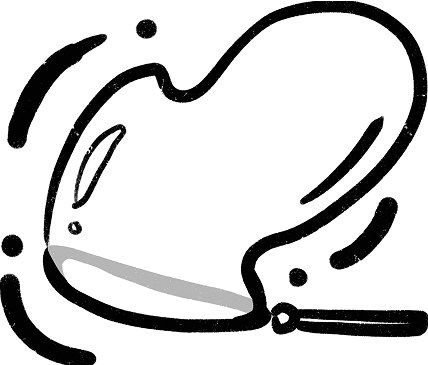
Take wire and bend it into a square as if drawing in the air. Blow four small bubbles—popping them carefully onto your wire frame—you get a square of bubbles.
Blow three bubbles and connect them at one point to form the base of a pyramid. Add a fourth bubble at the bottom to close the shape. You can make taller figures by adding more bubbles.
For giant bubbles, you need two sticks and a string between them. Dip this triangle into the soap solution and slowly lift it while stepping back—air will do the rest: filling the space with soap film. You can blow up a room-sized bubble or even step inside one.
Giant bubbles are like fleeting architecture—they require calculations: two sticks, string, wind direction. Crystal-clear soap spheres amaze children and even distract serious adults from boring reality.
The Science We Chew

Chewing gum is that forbidden pleasure from childhood—like smoking but pink, fragrant, and socially acceptable.
Gum is an irresistible rubbery temptation forbidden in childhood. Stretching it with your tongue and exhaling creates an ideal airy, fragrant sphere in your mouth. Our ancestors also loved to chew something: ancient Greeks carried mastic resin from trees; Mayan Indians enjoyed chicle—the natural latex juice extracted from trees of the Manilkara genus. Today we have more bubbles and less shame. Modern gum is a mix of Willy Wonka’s imagination, the Professor from “Back to the Future”, and slightly tired basement chemists—time to chew on this topic properly.
A Bubble to Its Limit—or Personal Stress Test
A true bubble master knows: first warm up the gum, then knead it well before blowing. When done right, chewing gum becomes an exercise in patience and facial muscle training.
The bubble grows and stretches—like deadlines or mortgages—and just when nerves are at their limit, the gum can’t hold anymore. “Pop!”—and you’re wearing your pink medal proudly (no need to wash your face). Victory!
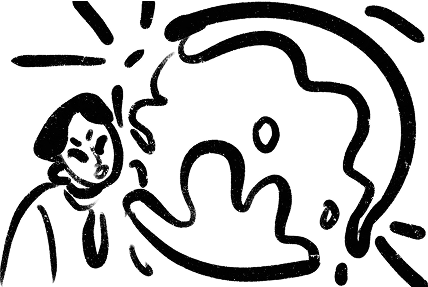
The Taste of Time
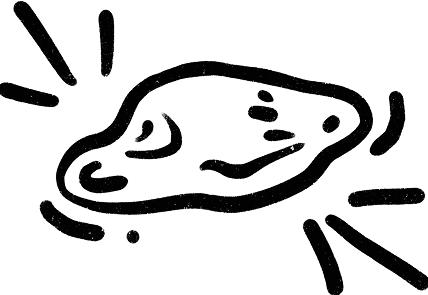
Let’s forget dinosaurs; the most interesting artifact is old gum stuck to the table. Over time, it turns into a hard tasteless chunk—a molecule of eternity in pink patches. The culprit? Rubber polymers in tiny spaghetti-like threads.
After freezing it turns into something as hard as granite slab—but just heat it up again—and it comes back to life like an old project suddenly relevant once more.
Sherlock Holmes with Chewing Base
It’s time to take on the role of Sherlock Holmes—but instead of a pipe in your mouth, you have chewing gum. You’re the detective, and your food is the clue. After dinner—chewing gum. If your tongue is sensitive, you might be able to guess up to five ingredients. And if you’re very lucky—even the olfactory component.
Chewing gum absorbs flavors like a sponge, making it an excellent way to test your culinary skills while also honing your detective abilities.

Smart Gum: When Candy Is Smarter Than You
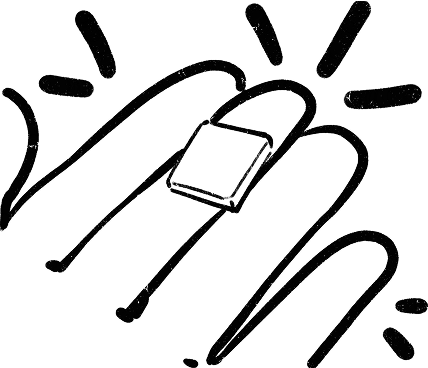
In 2020, gums with nanoparticles appeared on the market. They allow tracking of even the tiniest movements within the human body—for example, breathing patterns or blood flow nuances. It sounds like science fiction, but in reality, it’s a polymer platform based on saliva. Special sensors can measure humidity and even microscopic signals from inside the body while a person breathes through their nose or mouth.
In the future, this technology might not only freshen your breath but also diagnose illnesses—all while tasting like watermelon.
A Trust Bubble with a Hole in the Middle
A swimming ring is like a promise of stability: inside—air; outside—relaxation. It keeps you afloat even when you’ve lost all faith.
The water donut proudly floats on the surface of a pond or pool and gives a sense of security. Inside it there are billions of air molecules that promise: “We won’t let you sink because we’re lighter than water.”
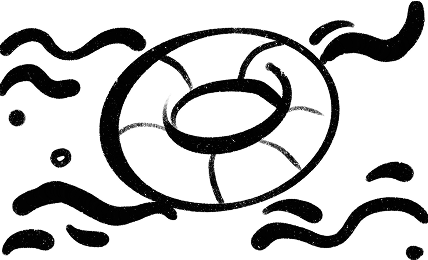
Many daredevils try to ride the ring like cowboys on a mustang. But no matter how much water tries to sink the round bubble, it doesn’t work. When submerged, the ring displaces water, but it pushes back upward. Even if you’re drowning in worries, the ring still pushes up. No magic—just physics. Amazing how a simple formula can work better than HR policies. Archimedes would approve.
Why a Square Is a Bad Idea
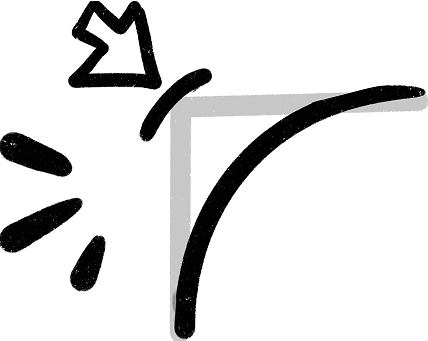
If you’re building relationships, business, or a flotation device—avoid sharp corners. They always create stress points. A circle is harmonious, like vacationing without Wi-Fi.
A swimming ring can’t be square either. In that case, corners would create “weak spots,” and water would cling to them, trying to pull the ring underwater. Who wants to tumble around like a lonely sock in a washing machine during a spin cycle? Only spheres and rings can withstand a rider and keep floating.
Pink, Striped, Shouting: A Visual Cry for Help
Few people encounter dull or inconspicuous round flotation devices. On the contrary—they’re decorated with all sorts of patterns and colors. But bright colors aren’t just for looks—they make them more visible on the water. A donut looks like a safety beacon shouting: “I’m here! I’m floating! And I’m perfectly fine!” If needed—you can be seen from miles away.
A swimming bubble combines air, pressure, and geometry so you can freely bounce on waves and snack on chips. And of course, it becomes a center of attention—a reason for new acquaintances and good fun.
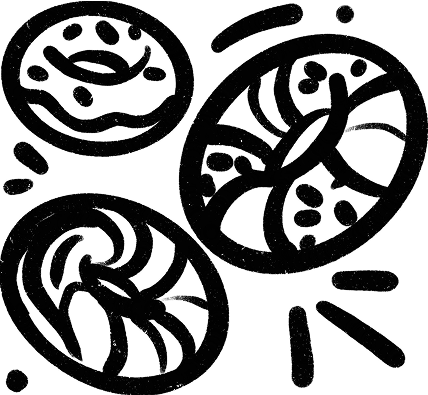
Bubbles, Lots of Bubbles
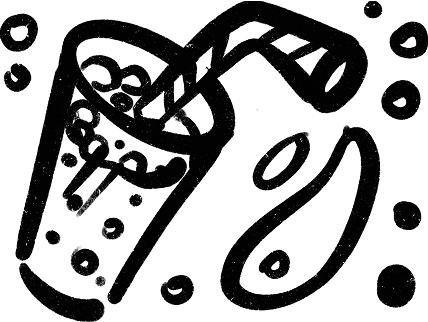
Shh-shh! No, that’s not the sound—it’s a cry for freedom. Carbonated drinks, those fizzy beverages that tickle and prick the tongue and surprise you. Bubbles irritate the taste receptors on your tongue, creating a sensation of “spiciness” and a slight tang. Without them, soda would just be sweet water.
It all begins like in a secret laboratory: air is pumped into the bottle with the drink. This is done by a steel tube with pressure, similar to a fire hydrant. The harder you press, the more gas gets dissolved into the liquid.
While the bottle is sealed, carbon dioxide remains quiet. Its molecules are sleeping, pressed down by pressure like a heap of stones. But as soon as you open the lid, pressure drops, and the gas molecules wake up and start searching for an escape. They crave freedom. To make their escape from the sticky liquid, they need an “evacuation point.” Nicks, scratches, or irregularities on the glass walls serve as such points. The molecules cling to these rough spots, climbing upward and forming microscopic bubbles. The more “escape routes,” the more active the escape and the louder the hissing. In a faceted glass, these bubbles put on quite a show: there’s definitely room to run around.
Party Where Gas Explodes
The explosive Mentos are a classic experiment with Соса-Соla. Just a few small candies dropped into a bottle guarantee a big fizz. The secret lies in the structure of these fizzy candies—they create millions of tiny “launch pads” for bubble formation. The gas that was peacefully sleeping suddenly wakes up and starts seeking an exit. This results in an impressive “explosion” of soda—worthy of Hollywood blockbusters.

Raisin Dance
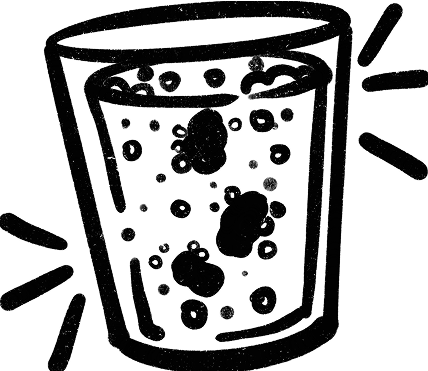
Even raisins can dance with soda! The playing field is drinks like Sprite or 7 Up. Drop some raisins into a glass of soda—they’ll modestly sink to the bottom, shy about their awkward shape. Bubbles rush toward them and cling all over like tiny life jackets. The raisins become light as feathers and start rising to fame—they “pop up” to the surface where reality awaits them. But as soon as bubbles burst around them, they become heavy again and sink back down. The juggling continues until the soda loses its fizz.
The Soda Artist and Its Lava Lamp
Soda can paint pictures! But it needs a canvas—a tall transparent bottle works perfectly. Pour about a quarter of oil into it; this will serve as the background layer. Then fill the bottle up with water and wait for the layers to separate.
Add a few drops of food coloring for vibrancy. Finally, drop in an effervescent tablet. As it dissolves, it creates bubbles that lift and then sink colored water through the oil layer—creating mesmerizing movements reminiscent of a lava lamp.
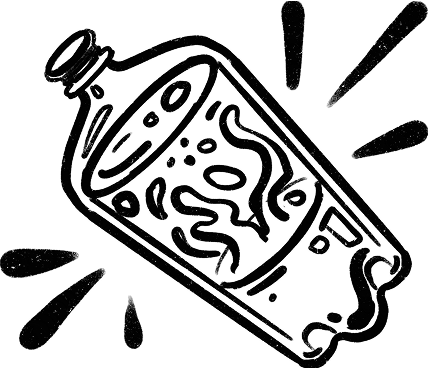
Edible Bubble with a Secret Ingredient

In your hands there is more than just a chocolate treat—the main value isn’t in its shell but in that plastic container with a surprise inside.
Temperature Balance — Fragility as Resilience
To embed “cargo” into a chocolate shell, melted chocolate is poured into molds. Before that, a plastic capsule with the surprise is placed inside—it’s lighter than chocolate so it stays centered within the future shell thanks to tiny anchors or holders. Once the shell hardens, these are removed to leave an empty space perfectly fitting the capsule.
The mold then gradually cools down so that cocoa butter crystals align properly: “No cracks! The surprise must survive.”

Thanks to this temperature balance, chocolate eggs don’t crack—they become simultaneously flexible like rubber and solid like stone.
If you try to break open such an egg immediately, it will crack along its seam—as intended. But if you’re gentle and apply slight pressure, it will bend like plasticine before giving way.
Observing spheres and bubbles can be fascinating—they reveal secrets about nature’s philosophy. They remind us that perfection isn’t about complication but about finding harmony in simplicity. Within each simple bubble lies an entire world of balance—economy of energy—and most importantly—freedom of movement.
It’s the same way in life too: sometimes building something real doesn’t require reinventing wheels; just taking one simple brick—be it concrete, wood, or plastic—and gradually creating your universe.
Let our world be not just a collection of parts but a living sphere of ideas and discoveries. And may each of us find our own “sphere”—that perfect form where inspiration is born, problems are solved, and laughter echoes.
After all, it’s within circles—and play—that all great stories begin.
A navigator determines the current location of a person on Earth. We’re mapping new routes in your consciousness.
Thank you!


